TL;DR
- 10+ AI-focused tools streamline coding, reviews, testing, and deployment in 2025
- Core value: save developer time by automating boilerplate, debugging, and docs
- Flatlogic speeds full-stack app delivery from months to days while keeping code ownership
- Mix of AI IDEs, PR reviewers, no-code builders, and utilities like JSON minify
Fact Box
- Flatlogic lets you launch full-stack apps in days instead of months. Source
- Flatlogic saves hundreds of developer hours, reducing cost and time to market. Source
- JSON Minifier removes whitespace and comments from JSON and is 100% free with no usage limits. Source
- Claude Code runs on Claude Opus 4.1 and is optimized for deep code understanding. Source
- Qodo Merge analyzes PRs in GitHub, checking code quality, tests, and security risks. Source
Once, I had an opportunity to collaborate with a team of developers. Surprisingly, they weren’t worried about the deadlines. What slowed them down was fixing the repeated bugs over and over. That’s when I realized that time is one of the most valuable things in web development.
As a tech-focused writer, I then interviewed developers, analyzed case studies, and reviewed feedback from teams in the field. I found that the problem for developers is traditional workflows. Teams often spend too much time on manual tasks such as repetitive coding, debugging, and design adjustments. So, this consumes the important time that could be used to give real value to the user.
In my findings, many developers rely on tools to improve their productivity and efficiency. Most of these tools automate coding, debugging, or testing. However, some simpler tools address very specific problems, such as optimizing files or reducing errors. These tools save a significant amount of time for developers.
In this blog, I’ll walk you through 10 tools that every developer should consider. These tools save time, reduce errors, and create new possibilities.
10+ Effective Tools for Web Development
I have chosen each tool in this list very carefully. Every tool solves real problems that developers can face in 2025. Let’s look at them one by one.
1). GitHub Copilot
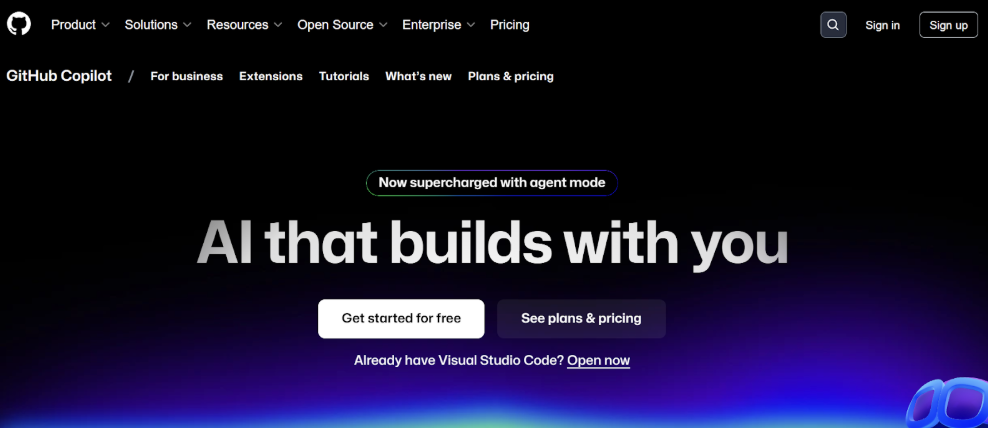
GitHub Copilot is one of the most widely used AI tools for developers today. It works like a coding partner inside your editor. As you type, it suggests code snippets, entire functions, and even documentation that match your project’s context. This makes coding smoother and less error-prone.
Developers rely on Copilot because it cuts down the time spent searching for syntax or writing boilerplate code. Instead of stopping to check documentation, you get instant recommendations that fit directly into your workflow. It’s especially helpful when exploring a new framework or debugging repetitive issues. 
Copilot is not meant to take the place of developers. It gives you a faster way to turn ideas into working code while you stay focused on the logic that matters.
Key Features:
- Real-time code completions tailored to your coding style.
- Supports a wide range of programming languages, with strong support for Python, JavaScript, TypeScript, and more.
- Deep integration with editors like VS Code and JetBrains.
- Learns from your coding patterns for smarter suggestions.
- Generates inline documentation to explain complex snippets.
2). JSON Minify
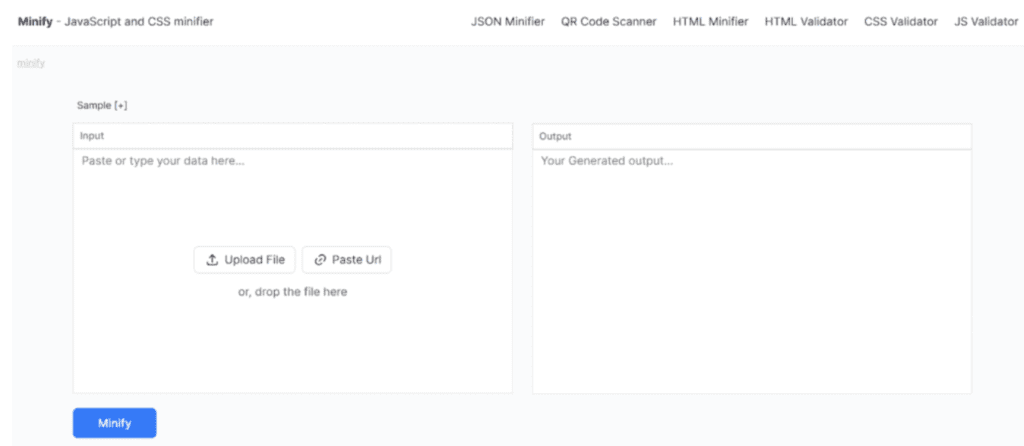
JSON Minifier is an efficient online tool that compresses JSON code without modifying its structure. It removes unnecessary characters such as spaces, line breaks, and tabs. While these elements contribute to making JSON easy for humans to read, they slow down things. After going through this tool, the JSON code loads faster and takes less bandwidth.
When a JSON file is free from unnecessary characters, your site or app opens quickly, and the user gets a better experience. For developers who use APIs, data moves faster between the server and the client.
Key Features:
- Removes extra spaces, line breaks, and comments automatically.
- Processes JSON instantly for quick results.
- Easy copy or download options after minifying.
- Works smoothly on desktop and mobile browsers.
- 100% free with no usage limits.
3). Flatlogic
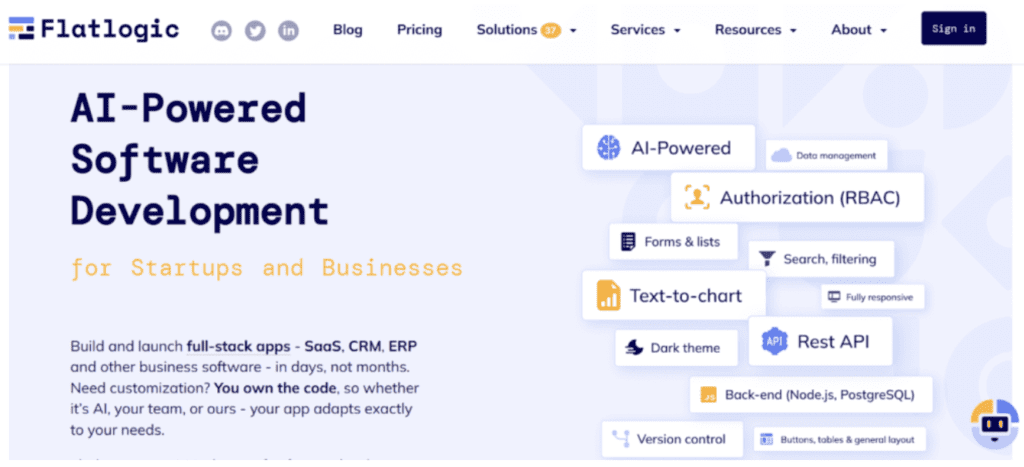
Flatlogic is an AI software development tool for startups and businesses. It makes full-stack apps like SaaS, CRM, and ERP in less time. Instead of spending months on setup, you can launch apps in days. It gives you frontend, backend, and database ready in one package.
The main benefit is speed and saving money. Flatlogic saves hundreds of developer hours, which means lower cost and faster time to market. You also own the code. This is important because you are not locked in. You can change and improve the code later with your team, with AI, or with Flatlogic experts.
It helps developers because boring tasks like boilerplate, project setup, and infrastructure are automated. Developers can focus on real features instead of repeating the same setup every time. Businesses can test MVPs quickly, scale apps, and keep control of the code.
Flatlogic also uses a modern stack like Next.js, Node.js, and PostgreSQL. This makes it reliable for real business apps. It is good for web apps, ERP systems, CRM platforms, and SaaS tools.
Key Features:
- AI builds full-stack apps with frontend, backend, and database.
- Clean, production-ready code with version control.
- You own the code and can fully customize it.
- Instant cloud deployment, no setup needed.
- Based on modern stack: Next.js, Node.js, PostgreSQL.
4). Qodo Merge

Qodo Merge integrates AI-powered assistance into your development process to speed up pull requests. It works directly inside GitHub and looks at your pull requests like a second set of eyes. It points out spelling mistakes in commit messages. It also looks at the code quality, test coverage, and even possible security risks.
What makes it different is the way you interact with it. Instead of bouncing between GitHub comments, docs, and Slack, you can chat directly with your PR. You type questions in plain English (like “does this cover edge cases?”) and it answers based on the context of your changes. That context-awareness saves time and lets you focus on code quality before merging.
It is a little difficult to learn at first, and some features, like private repo support, are paid. But once you regularize it, it becomes your partner in daily development projects.
Key Features:
- Automated PR analysis that checks for code quality, tests, and vulnerabilities.
- Context-aware PR chat for private, relevant code conversations inside GitHub.
- Smart code suggestions with committable improvements and better visibility.
- Simple command-based workflow (/review, /describe, /ask, etc.).
- Chrome extension for quick access and a cleaner interface.
- Open-source and customizable, with Pro features for private repos.
5). Claude Code
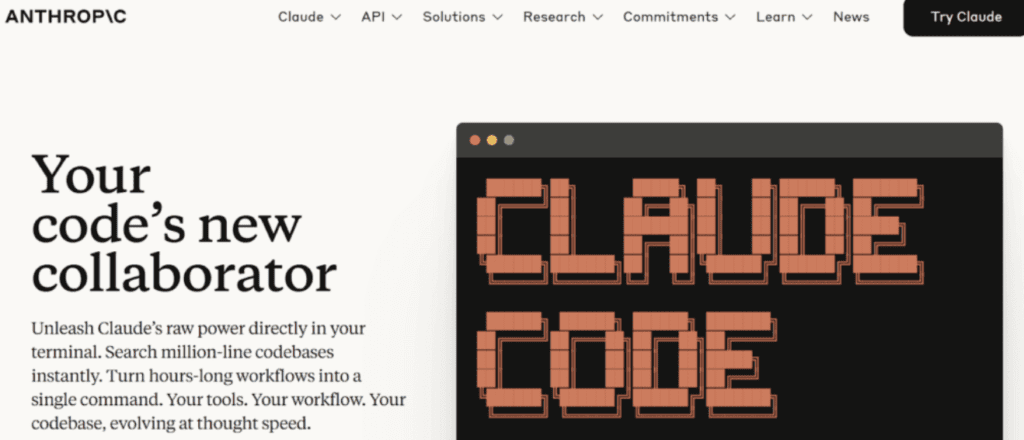
Claude Code is like adding a senior engineer to your terminal. One who actually knows your codebase inside out. You just need to type a command and let Claude handle scanning thousands of files, tracing dependencies, and switching between IDEs and docs. It runs on Claude Opus 4.1, which is the same model that Anthropic engineers use in their work. So, it is optimized for understanding deep code rather than general chat.
Claude Code also works across your stack. In VS Code and JetBrains, it suggests edits that actually respect your project conventions. In the terminal, it ties into deployment scripts, databases, test runners, and version control.
You can tell it to take an issue from GitHub, implement the fix, run the tests, and open a PR. Still, you are in charge. It will automate the repetitive tasks and will ask your permission before making any changes.
For teams working with big, messy codebases, it feels more like an extra set of hands than just another AI assistant. It’s not perfect, so you should still carefully look over its suggestions.
Key Features:
- Agentic search for whole-codebase awareness without manual context setup.
- Multi-file edits that respect dependencies and coding standards.
- Direct terminal integration with GitHub, GitLab, and CI/CD tools.
- IDE support for VS Code and JetBrains with inline suggestions.
- Secure workflow-never modifies files without explicit approval.
- Customizable via SDK or GitHub Actions for team-specific setups.
6). Windsurf IDE

Windsurf IDE is built by Codeium and feels like an IDE designed for how developers actually work in 2025. It integrates AI into coding instead of forcing you to switch between chatbots, code windows, and terminal commands. The standout here is Cascade, Codeium’s continuous awareness system.
Unlike other AI copilots that reset after each prompt, Cascade remembers your entire context and adapts as you build. It feels less like autocomplete and more like another brain working alongside you. You can ask Windsurf to prototype a feature, debug a failing test, or edit logic across multiple files. It handles it without breaking consistency.
In collaboration mode, it can work as a hands-on copilot that waits for your direction or takes on tasks autonomously when you want it to. The key is understanding your project’s structure and intent, not just suggesting lines.
For teams managing large codebases, this IDE cuts down on context switching. Instead of juggling docs, terminal commands, and editors, you can stay inside Windsurf and let AI bridge the gaps. It’s not flawless, but Cascade alone makes it feel closer to real pair programming than anything else out there.
Key Features:
- Cascade technology with continuous project-wide awareness.
- Deep contextual understanding for smarter, relevant code suggestions.
- Real-time collaboration mode: copilot or autonomous agent.
- Multi-file edits that maintain logic and dependencies.
- Built-in terminal command execution via AI prompts.
- Rapid prototyping with AI-generated frameworks.
7). CodeRabbit
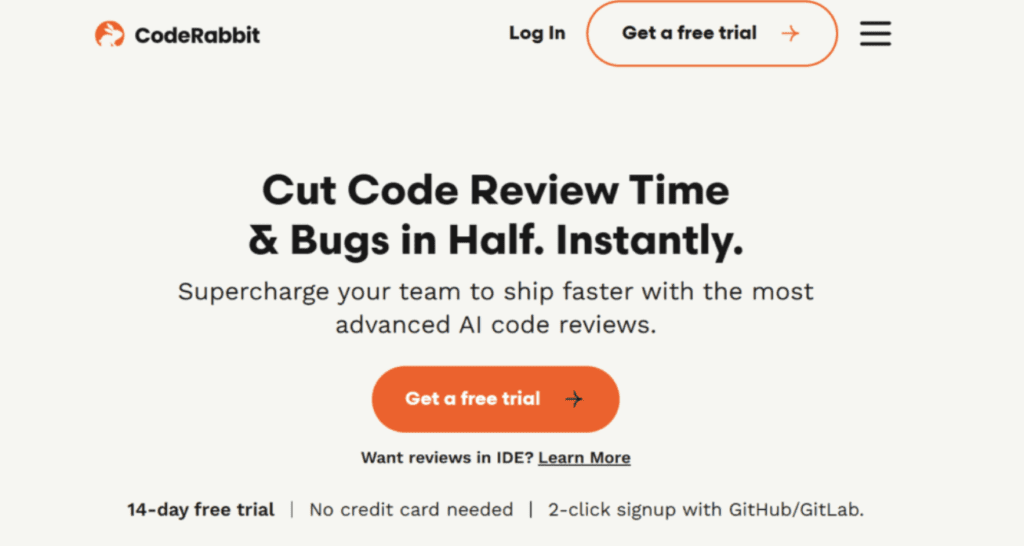
CodeRabbit handles pull requests like a teammate rather than a review bot. It goes through your code line by line, pointing out bugs, weak logic, and places where small changes could prevent bigger issues.
What makes it different is how it learns from your team. Every time you accept or reject its suggestions, CodeRabbit sharpens its sense of what “good code” means for your project.
The workflow is built around GitHub and GitLab. You open a pull request, and CodeRabbit jumps in with feedback, summaries, and even auto-generated documentation. In a distributed team, real-time chat in the review context is invaluable. You can argue, clarify, or even generate code fixes without jumping between tools.
The incremental review feature in CodeRabbit makes it easy to work with large codebases. It reviews continuously as new commits come in. That makes early bug detection much easier. It also works with Jira, so reviews stay linked to the tasks that made them happen.
For teams juggling speed with quality, CodeRabbit helps strike that balance. It can’t take the place of human judgment, but it removes repetitive parts of code reviews so that you can make the important decisions.
Key Features:
- Gives smart, line-by-line feedback on pull requests using AI.
- Learns from your actions to make better suggestions over time.
- Allows you chat in real time and generate code directly during reviews.
- Keeps reviewing automatically as new commits are added.
- Works with GitHub, GitLab, and Jira.
- Spots bugs, writes summaries, and creates documentation for you.
- Handles large projects with step-by-step, ongoing reviews.
8). Cursor
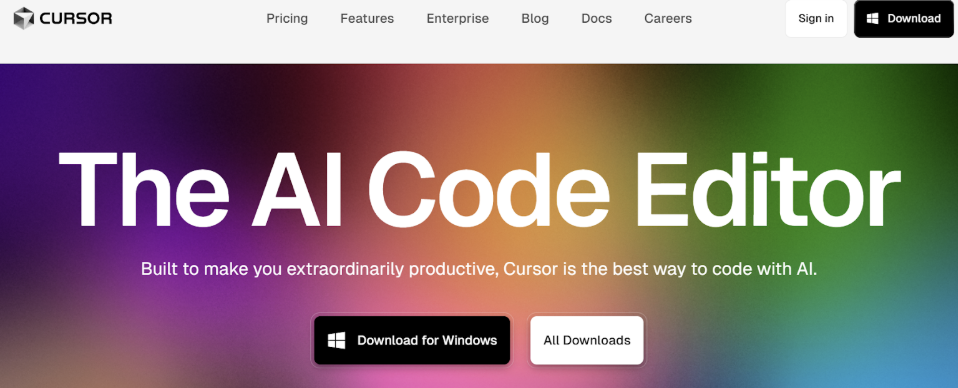
Cursor is built on top of VS Code but comes with AI built inside. It may look or feel like the editor you already know, but it does more work for you. Instead of typing every line or searching Stack Overflow for fixes, you can ask Cursor in plain English and get a working code in seconds.
It’s like having an AI pair programmer sitting next to you. Cursor suggests full functions, finds bugs while you type, and even explains what went wrong. Developers also like it for quick automation. It can automate things like building a WordPress widget or running scripts for backlink audits. It is fast, reliable, and saves hours of manual work.
Another notable feature is debugging. Cursor can read through your code, highlight problems, and even suggest fixes. It does not replace your brain, but it can save hours of searching Stack Overflow or scanning docs. For developers who are already familiar with VS Code, Cursor feels like a natural extension rather than a completely new tool to learn.
Key Features:
- Suggests entire code blocks that match your style.
- Write instructions in English and get usable functions instantly.
- Ask questions in real time, get fixes, and even reference files or images.
- Scans your code as you type to prevent small issues from becoming bugs.
- Gives feedback on performance and best practices before you push.
- Auto-writes clean documentation to keep projects consistent.
9). Appy Pie
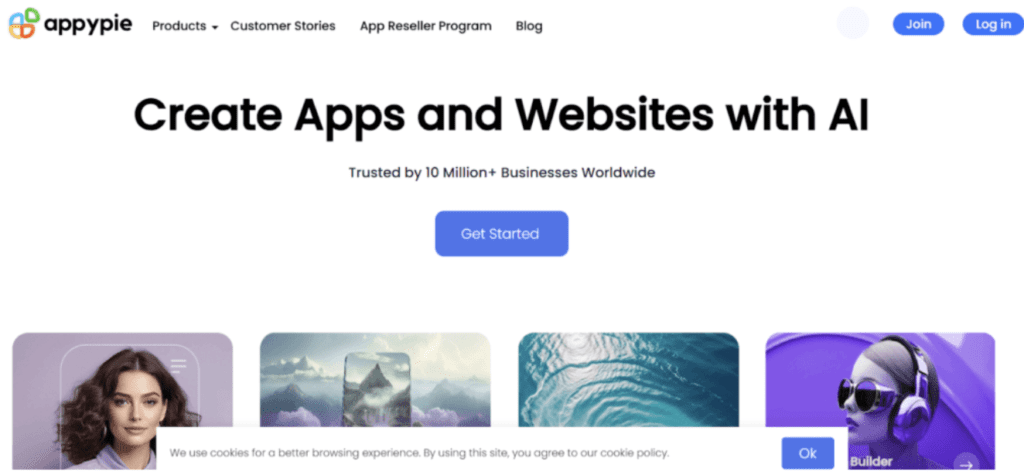
Appy Pie takes a different angle on AI for developers. It is a versatile platform that non-coders can use to make functional mobile and iOS apps and even web apps. It has a drag-and-drop working interface. You can put components together instead of typing syntax. This is the first realistic way for many startups and small businesses to create an app without a development team.
What makes Appy Pie stand out now is how it has leaned into AI. Its ChatGPT-powered chatbot builder is popular. You can create a conversational assistant inside your app that feels far more natural than the scripted bots most people are used to. In addition, AI features like voice recognition make apps more interactive without extra engineering.
Appy Pie doesn’t replace advanced development environments. But it meets a big need for teams and people who don’t know how to code and need to get things going quickly.
Key Features:
- No-code development allows users to build apps without writing any code.
- Offers AI-powered functions like chatbots and voice recognition.
- Provides Cross-platform compatibility for iOS, Android, and web.
- Integrates with popular services and marketplaces.
10). Lovable
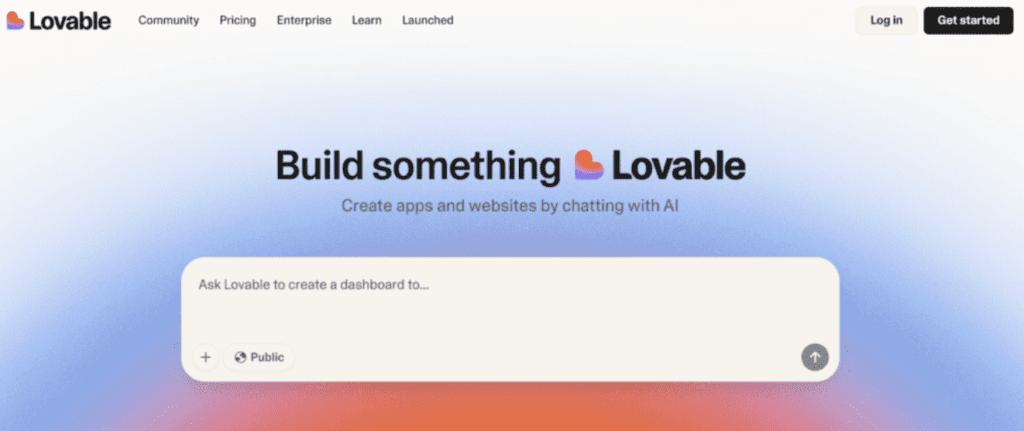
Lovable is a no-code development platform. You tell it what you want in plain text, and it generates the structure, design, and base code for you. You can create landing pages, dashboards, authentication systems, and AI-driven tools without typing any code.
The standout feature of this tool is its full-stack capability. Most development tools support only one aspect, such as either the front end or the back end. But using Lovable, you can work on both sides. If you are non-technical, you can run with the generated version as-is.
If you are technical, Dev Mode lets you dive into the code directly inside the platform without needing GitHub. That flexibility makes it useful for solo founders who need speed, as well as developers who want a head start instead of starting blank.
Another strength is how it bridges design and build. You can import content straight from Figma and apply it to your site, or pick from its library of templates to get moving.
Key Features:
- Full-stack generation, the front end and back end are built automatically.
- Direct Figma integration for content imports.
- Template library for sites, apps, and dashboards.
- Dev Mode for editing all code inside Lovable’s editor.
Key Factors to Consider When Choosing a Web Development Tool
When choosing a tool for web development, you should think about what will make your work easier. Here are some important things to consider:
- The tool should feel simple to navigate. Look for guides or docs that assist you in starting without spending hours learning the basics.
- Make sure it works with the stack you already use, like React, Node.js, or Django.
- A slow tool kills productivity. Choose one that loads and compiles quickly to save you time.
- Check if it connects well with Git, APIs, or databases you rely on. Easy integration saves a lot of work in the long run.
- Look for tools that offer you customization options to match your workflow.
- Do not just think about your current project. Pick a tool that is scalable as you grow and work on bigger projects.
Wrapping it Up
The tools we have discussed above are the new foundation of how development actually happens in 2025. These tools all solve the same basic problem: developers don’t have time to waste. For example, Copilot helps with boilerplate code and syntax, Windsurf remembers everything about your project, and CodeRabbit finds bugs before they go live.
What stood out to me while I was researching these tools was how they change the job of the developer. You’re no longer typing syntax and fixing errors. Instead, you spend your day designing, refining logic, and building important features. The AI handles the outline, the repetitive edits, and the documentation.
If you’re looking to build full-stack web apps like SaaS, CRM, or ERP faster, Flatlogic is your one-stop solution. It lets you create and launch full business apps in just days. It’s powered by AI, fully customizable, and gives you complete access to the code. So, you can go from idea to launch fast and start making money sooner.
Comments